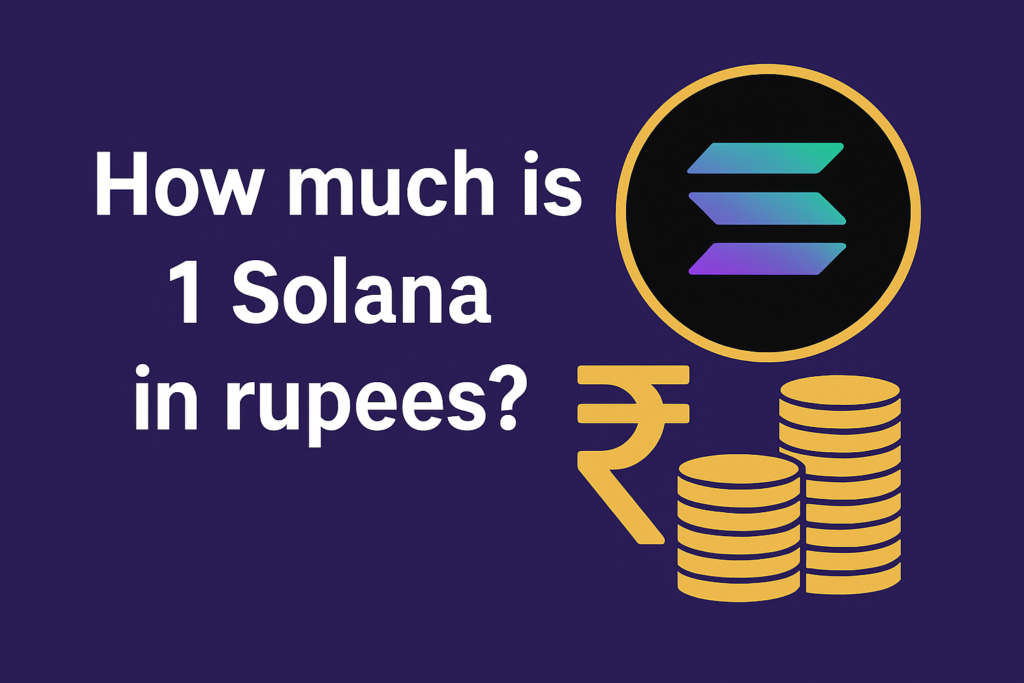Will Solana (SOL) Hit $500 Before 2026? 3 Hidden Gems That Could Outpace SOL
- $500 SOL by 2026? It’s possible but demanding. At $500, SOL’s market value would likely sit in the $230B–$300B range depending on circulating supply—a “top-three” crypto size scenario. That requires favorable macro, sustained Solana usage growth, and few network hiccups.
- Catalysts: Throughput and fee efficiency, parallelization progress, client diversification (e.g., additional validators/clients), payments & stablecoin volume, DeFi/NFT/memecoin liquidity, DePIN, and enterprise integrations.
- Risks: Macro shocks, regulatory pressure, network outages, liquidity droughts, smart-contract exploits, and competition from other high-performance L1s/L2s.
- 3 Hidden Gems (higher upside potential by %):
- Jupiter (JUP) — Solana’s liquidity router/DEX aggregator that benefits from all on-chain trading flows.
- Pyth Network (PYTH) — High-speed oracle network powering price feeds for DeFi; revenue and expansion can compound usage.
- Jito (JTO) — MEV + liquid staking on Solana; captures validator/MEV economics as blockspace demand grows.
- Bottom line: A diversified Solana-centric basket (SOL + JUP + PYTH + JTO) can risk-manage while letting you ride potential ecosystem upside.

Why This Question Matters Now
Solana’s reputation has evolved from “fast but fragile” to a serious high-throughput chain with vigorous developer activity, rising stablecoin settlement, and an energized retail culture. The $500 question boils down to fundamentals: Can Solana translate throughput and UX into durable economic value—and can it hold that lead long enough to command a mega-cap valuation by 2026?
The $500 Math: What Would It Take?
Market-cap math:
- If circulating supply sits roughly in the 460M–600M SOL band through 2025–2026, a $500 price implies a $230B–$300B market value.
- For context, that would place SOL squarely among the largest crypto assets historically—requiring broad, sustained adoption and favorable liquidity conditions.
What must line up?
- Macro risk-on: Crypto typically thrives when rates, liquidity, and risk appetite help growth assets.
- On-chain growth: Daily active addresses, transactions, stablecoin volumes, and developer retention need to trend up.
- Infra resilience: Multiple reliable validator clients, stable uptime, and speedy block confirmations at scale.
- Clear narratives: Payments (USDC), consumer apps, DeFi 2.0, DePIN, gaming, and NFT liquidity cycles all fueling fees and stickiness.
- Capital formation: Continued listings, on-ramps, cross-chain bridges, and institutional market-making.
Reality check: Big round numbers attract attention but also resistance. A multi-hundred-billion market value assumes Solana can monetize activity (fees + MEV + app growth) and keep users despite competitive chains and rollups.
Catalysts That Could Propel SOL Toward $500
1) Payments & Stablecoin Velocity
- Solana’s low fees + fast finality make it practical for micro-payments, remittances, tipping, and in-app transactions.
- If USDC settlement and merchant integrations keep compounding, SOL benefits as the native asset of the settlement layer and as an “index bet” on the whole activity stack.
2) Developer Flywheel & Consumer UX
- Faster UX → more casual users → more app experiments (social, gaming, loyalty, ticketing) → more reasons to stay on Solana.
- App-level success stories (viral games/social apps) can lock in network effects that justify higher valuations.
3) Infra Maturity & Client Diversity
- Additional validator clients and better parallelization reduce outage risk and improve predictability under heavy load.
- Institutional confidence grows when throughput is sustained under stress.
4) Deep Liquidity for DeFi/NFTs/Memecoins
- Solana has become a hub for retail-led trading (including memecoins) and an increasingly serious DeFi venue.
- Aggregation layers (like Jupiter) and novel AMMs lower friction and concentrate liquidity—raising fee capture and making Solana the easiest place to trade.
5) DePIN, RWAs & Enterprise
- Low cost + speed are valuable for data-heavy and IoT-style primitives, ad-tech, and oracle-driven finance.
- As Real-World Asset (RWA) platforms mature, Solana could be a back-office engine for issuance, settlement, and reporting.
Headwinds That Could Cap SOL Below $500
- Macro & liquidity: Tight financial conditions or risk-off cycles can slam multiples.
- Regulatory gray zones: Headline risk around exchange listings, staking, or token classifications can dent demand.
- Outages/exploits: Even if rare, they erode institutional trust and slow integration timelines.
- Competition: Modular stacks (L2s, shared sequencers), alternative high-throughput L1s, and app-specific chains compete on price, liquidity, and dev mindshare.
- Concentration & governance: Perceived centralization in infra or governance can weigh on valuation.
Price Scenarios Through 2026 (Illustrative)
| Scenario | Key Assumptions | 2026 Outcome (Illustrative) |
|---|---|---|
| Bull | Robust macro, sticky consumer apps, stablecoin volumes surge, infra rock-solid, DeFi/NFT upcycle | $450–$600 per SOL (brief wicks above possible) |
| Base | Mixed macro, steady dev growth, payment traction, occasional frictions | $220–$380 per SOL |
| Bear | Risk-off, outages/exploits, regulatory headwinds, liquidity fragmentation | $70–$180 per SOL |
Note: Scenarios are directional, not guarantees. Crypto is highly volatile.
The “Hidden Gems” That Could Outpace SOL by Percentage
When a blue-chip L1 enters mega-cap territory, percentage gains often slow versus smaller ecosystem tokens. If Solana adoption accelerates, the picks-and-shovels that route liquidity, supply data, or capture staking/MEV can surge faster. Three that many sophisticated traders keep watching:
1) Jupiter (JUP): The Liquidity Router of Solana
What it is:
Jupiter is the DEX aggregator/liquidity layer that routes trades across Solana AMMs and order books to secure best execution. As on-chain volumes rise—DeFi, NFTs, memecoins, structured products—Jupiter sits at the crossroads.
Why it could outpace SOL by %:
- Volume-linked narrative: If Solana becomes the retail trading home, Jupiter’s usage scales nonlinearly.
- Network effects: More integrations → tighter spreads → more traders → more integrations.
- Monetization levers: Fees, launchpad/business lines, and potential cross-chain aggregations.
Key watch-items:
- Daily routed volume; share vs. native AMMs; new products (perps/options/range liquidity); builder ecosystem support.
Risks:
- Fee compression; competition from rival aggregators/AMMs; dependence on overall Solana volumes.
2) Pyth Network (PYTH): High-Speed Oracle Flywheel
What it is:
PYTH delivers financial price feeds to smart contracts with low latency, an essential primitive for perpetuals, lending markets, options, and structured products.
Why it could outpace SOL by %:
- Oracle demand scales with DeFi: Every new market and product increases feed demand.
- Cross-ecosystem expansion: While strong on Solana, Pyth’s growth on other chains can diversify revenues and strengthen the token’s economic story.
- Data moat: Partnerships with market-makers/exchanges create defensibility.
Key watch-items:
- Number of active feeds; protocol integrations; revenue/fee flows; cross-chain usage.
Risks:
- Oracle incidents are high-impact; fee/pricing wars with other oracles; market downturns cutting DeFi risk appetite.
3) Jito (JTO): MEV + Liquid Staking, the Blockspace Dividend
What it is:
Jito combines MEV infrastructure with liquid staking for SOL, aiming to capture validator-side economics more efficiently and pass value to participants.
Why it could outpace SOL by %:
- Blockspace demand → more MEV: As Solana trading intensity increases (arbs, liquidations, NFT mints), MEV opportunities grow.
- Staking flywheel: A compelling liquid staking token (LST) attracts deposits, compounding protocol revenues and mindshare.
- Vertical integration: MEV + staking can be synergistic in optimizing returns.
Key watch-items:
- LST market share vs. other SOL staking options; MEV capture and distribution stats; integrations across DeFi.
Risks:
- Staking competition; regulatory ambiguity around staking yields; MEV centralization concerns.
Portfolio Construction: A Solana-Centric Barbell
Objective: Capture Solana upside while boosting potential returns with ecosystem “beta amplifiers.”
- Core (50–70%): SOL — the network index.
- Growth (15–35%): JUP + PYTH + JTO — higher-beta plays tied to volumes, data, and staking/MEV.
- Opportunistic (0–15%): Rotational bets (new perps venues, NFT infra, DePIN, social apps) with strict risk controls.
Risk Controls:
- Position sizing by market cap/liquidity.
- Pre-define invalidation levels; use staggered entries (DCA).
- Take profits on vertical moves; redeploy after pullbacks.
- Avoid over-concentration in single smart-contract risks.
On-Chain & Market Metrics to Track Weekly
- Network health: Transactions per second (sustained), failed tx rate, median fees, uptime.
- Adoption: New unique signers, daily active addresses, retention cohorts.
- Economic activity: Stablecoin transfer volume, DEX volumes, NFT secondary sales, perps OI, liquidations.
- Liquidity: CEX spot/derivatives OI for SOL, funding rates, basis, top books’ depth.
- Ecosystem traction: JUP route share & volumes; PYTH feed usage; Jito LST TVL and MEV distributions.
What Could Change the Thesis Quickly?
- Major payments integration (e.g., large fintechs enabling Solana rails).
- Breakthrough consumer app with millions of weekly users.
- Infra milestone: Broadly adopted new validator client reducing tail-risks and boosting throughput at peak loads.
- Regulatory clarity for staking, stablecoins, or exchange listing policies.
- Security incident or prolonged outage (negative).
- Liquidity crunch on exchanges or stablecoin depegs (negative).
Investment Checklists (Actionable)
Before adding SOL:
- Is macro in “risk-on” (equities up, vols down) or “risk-off”?
- Are Solana’s fees predictable under load?
- Are stablecoin flows and DEX volumes rising week-over-week?
Before adding JUP:
- Route share increasing? New product launches live?
- Depth/volumes during volatile days (does the router handle stress well)?
- Governance or fee changes that alter token value accrual?
Before adding PYTH:
- New integrations across chains?
- Fee/revenue disclosures or dashboards trending up?
- Resilience during market dislocations (oracle accuracy events)?
Before adding JTO:
- LST share vs. competitors; staking APY consistency.
- Evidence of MEV capture and transparent distribution.
- Smart-contract audits and slashing history.
Risk Disclosure (Please Read)
Crypto assets are highly volatile. This article provides educational analysis, not investment advice. Always do your own research and consult a licensed professional. Never invest more than you can afford to lose.
FAQs
Q1: Is $500 for SOL by 2026 realistic?
It’s ambitious but not fantasy. It needs a supportive macro backdrop, sustained on-chain growth, strong infra reliability, and continued leadership in consumer-grade UX. In a bull scenario, $500–$600 is within reach; in base or bear scenarios, SOL could fall well short.
Q2: Why might JUP, PYTH, and JTO outperform SOL?
They’re smaller-cap, higher-beta plays leveraged to Solana’s core activity streams—trading volume (JUP), data for DeFi (PYTH), and staking/MEV (JTO). If Solana usage booms, these can scale faster by percentage than the network token.
Q3: Are these actually “hidden” gems?
They’re “hidden” relative to SOL’s brand power. Among pro traders and DeFi natives, they’re well-watched. Among broader retail, they’re still lesser known than SOL—leaving room for discovery-driven repricing.
Q4: How should I size positions?
Use a core-satellite approach: SOL as the core; JUP/PYTH/JTO as satellites. Size by liquidity and conviction, and use DCA with predefined invalidations.
Q5: What could invalidate the bull case quickly?
A major network outage/exploit, severe regulatory action, or a macro liquidity crunch can derail the path to $500.
Q6: What about other contenders (e.g., perps venues, NFT infra, DePIN)?
There are promising names, but the trio chosen here represents distinct rails—liquidity, data, and staking/MEV—covering much of the Solana economic engine.
Conclusion
A run to $500 would crown Solana as a top-tier mega-cap—a feat that demands flawless execution, sticky user growth, and benign macro. Whether or not SOL gets there by 2026, the risk-adjusted way to express a Solana-centric view may be a basket: anchor with SOL and amplify with JUP, PYTH, and JTO—each riding a different but complementary wave of ecosystem demand.
Navratri Traditional Wear | Best Outfit Ideas for Garba Nights

Explore stunning Navratri traditional wear including lehengas, sarees, and chaniya cholis. Perfect inspiration for your garba and dandiya nights. 💃✨ Navratri Traditional Wear | Best Outfit Ideas for Garba Nights Navratri is one of the most vibrant festivals in India, celebrated with immense energy, devotion, and style. Apart from the devotional rituals, the highlight of…
Taylor Swift Net Worth 2025: How Music Alone Made Her a Billionaire

Taylor Swift Net Worth 2025: How Music Alone Made Her a Billionaire It is not enough to say that Taylor Swift is a pop phenomenon; she is also a financial powerhouse who has redefined what it means to be a successful musician in the modern music industry. It is anticipated that her net worth is…
JD Vance Net Worth: The Unexpected Rise of a Rust Belt Millionaire

From a troubled Ohio upbringing to becoming a bestselling author and U.S. Senator, JD Vance’s story reads like a movie script—because it literally became one. But beyond the headlines and political debates, one question keeps popping up: how rich is JD Vance, really? So, What’s JD Vance Worth in 2025? Depending on where you look,…



